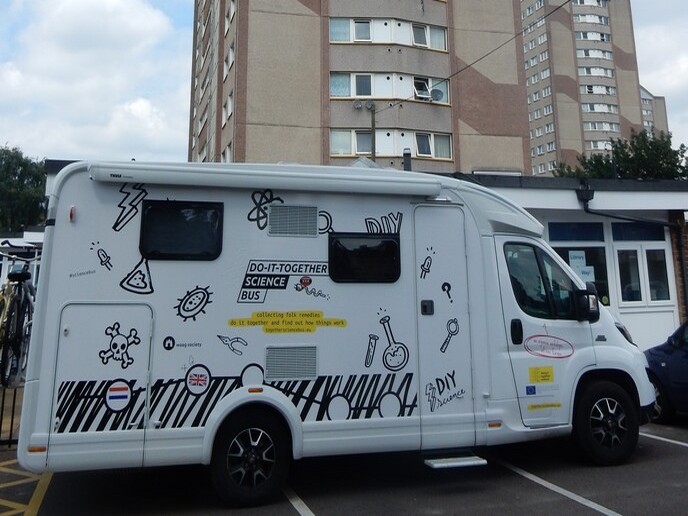Community science rides the escalator of public engagement
Traditional science communication often precludes opportunities for the opinions of the general public to be voiced, while creating barriers to engagement with science in a way that is meaningful for them. “Doing-Science-Together creates the potential for genuinely two-way communication between science and society,” says Muki Haklay from the DITOs(opens in new window) (Doing It Together science) project. To engage with the public, the project delivered 829 public events over 3 years, achieving over half a million face-to-face interactions and a further 3 300 000 online. Activities were structured around two themes: biodesign and environmental sustainability. DITOs was guided by the escalator(opens in new window) model of engagement. This concept contends that people’s engagement with science can increase or decrease over time, depending on their life stage, resources, capabilities, knowledge and interests.
Piggybacking on activities
The DITOs model had seven levels of engagement, ranging from the passive consumption of knowledge, for example through television, to more active participation, such as enrolling in citizen science projects. “We wanted to identify opportunities to move individuals up or down to a level suiting their circumstances. Starting with where people are, and not pulling them to where science is, offers meaningful and lifelong engagements with science,” explains Haklay from University College London(opens in new window) (UCL), the project host. The project partners used both existing networks and outreach activities to connect with members of the public, with a range of tactics from social media to appearances at museums or festivals. DITOs also provided support for those partners with little prior experience of citizen science, for example by integrating interactive opportunities for the public into planned events such as exhibitions. “We tailored science activities according to the partner, designing them to reach people and places usually untouched by traditional engagement efforts,” remarks Haklay. Perhaps the most literal example of this was the Science Bus, coordinated by Dutch charity Waag(opens in new window). Science communication community members were recruited to drive the bus across Europe, making 17 stops at community centres, small towns, public festivals and museums. Participatory workshops at these locations offered nine activities including experiments to make yoghurt (teaching about bacteria) and a sun cream (investigating the properties of sunrays). Instructions were available in multiple languages, with experiences shared on social media. Another success was BioBlitz(opens in new window), part of the City Nature Challenge(opens in new window), where people assembled at specific locations and used the iNaturalist app to collect biodiversity data. The Europe-wide BioBlitz network(opens in new window) was formed to share these experiences.
A step change
One of the concrete legacies of DITOs is the enlargement of the European Citizen Science Association(opens in new window) (ECSA), which continues its work, most prominently in developing the EU-Citizen.Science platform. “ECSA is now the ‘go to’ organisation for citizen science projects, which often join the association to increase their reach,” notes Haklay. Active in policy, ECSA partook in the discussion on citizen science as part of the European Commission’s Open Science agenda. In the United Kingdom, DITOs gave input into the public participation and funding strategies of the national science funder, UKRI(opens in new window). In Italy, it helped set up a network of citizen science researchers and practitioners, currently influencing national science policy. The project’s results have already been widely published(opens in new window), and a range of policy briefs(opens in new window) and guidelines resulting from the project are available online.



